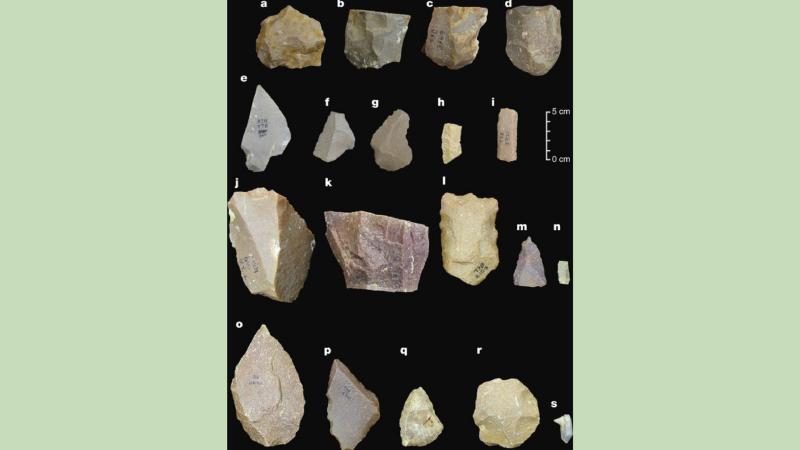
3,85,000-year-old stone tools found in India could give insights into the migration of ancient humans from Africa. What other mysteries lie beneath India’s sediments?
In the story of human origin and migration, many pages have been lost to the sands of time. Now, archaeologists from India and France have found one such coveted page in the sediments of Attirampakkam, a small town near Chennai, India, which is a classic site in the history of Indian archeology, known to be one of the oldest sites to contain stone artifacts.
Among the 7,000 stone tools recovered, the archeologists have observed a progressive change in the tool making technique similar to those used by the precursors to modern humans during the stone age. These tools, the archaeologists believe, are between 3,85,000 to 1,72,000 years old, belonging to the Middle Palaeolithic culture.
The stone tools found in Attirampakkam are special because going by their age, the finding contradicts the previously accepted theory that ancient Homo sapiens migrated to India from Africa some 1,25,000 years ago. The location of the Indian subcontinent actings as a checkpoint in the map of human migration, it is an important evolutionary crossroad. Thus, the findings suggests that the migratory pulse might have happened more than 60,000 years earlier than estimated!
“Several decades of intensive research in India has yielded many rich Palaeolithic complexes with wonderful contributions from many archaeologists. Relatively few have been excavated or dated compared to the wealth that we have”, says Dr. Shanti Pappu from the Sharma Centre for Heritage Education, India, who is also the lead researcher of the study published in the journal Nature. “Though it is unlikely to find DNA evidences or fossil evidences at this site or area, owing to the nature of the sediments, several discoveries have been made elsewhere in India and there is a possibility for more fossil finds”, she adds.
The researchers of the study used a technique called ‘luminescence dating’ to calculate the age of the stone implements. This technique measures the amount of light emitted by an artefact depending on the amount of radiation it has been exposed to, from its surrounding environment since the time of it’s burial. Since skeletal material this old is relatively scarce, over 7,000 stone implements were dated to study human evolution in Eurasia according to the types of tools used by these ancient humans.
When our hominid ancestors – Homo erectus – left Africa, they carried with them their signature tool-- the large Acheulean axe. The data from this study showed a shift from these biface axe-like tools to much smaller stone tools made in a style called Levallois. The more complex and advanced Levallois flint had a sharp edge and was most likely mounted on a stick, to be used as a spear. The appearance of this type of tool marked the shift from the preceding Acheulian culture to the Middle Palaeolithic culture. This coincides with recent discoveries of hominid remains in Morocco and the United Arab Emirates which put the migratory phase from Africa to Eurasia at around 3,50,000 years ago, thus cementing the belief that the migratory event happened much earlier than once thought.
However, an opposing theory suggests that hominids indigenous to India might have invented this technique of tool making without the influence of hominids that migrated from Africa to India. A study of the transition from Acheulean bi-faced tools to Levallois flake tools undertaken in Armenia, says that this gradual shift is part of a logical progression and that the transitional change occurred many times independently before becoming widespread. As seen with other archaic human and the Neanderthals.
“We do have transitional assemblages that mark the transitions from the preceding Acheulian. We are not speaking only about one technology or tool type, rather a total shift in the overall patterns of making tools. We are very cautious in our paper as regards correlations with species”, comments Dr. Pappu on the alternative theory.
The most definitive way to discern who the proprietors of these tools are, would be to unearth the skeletal remains of the ancient human species. However, the lack of skeletal fossil finds make this a daunting task. While we may not really know “who” exactly made these tools, we can now say that it was made by someone who was here before the arrival of Homo sapiens from Africa, as we understand today. This finding might help rewrite the story of human migration, as evidence from across the world gathers towards this.
There are numerous stratified sites like Attirampakkam in many parts of India that have huge potential and could hold the answers to human evolution and dispersion. And researchers are constrained by funds and resources to dig our history. “We need more grants for long-term research projects in prehistory in India”, says Dr. Pappu.





